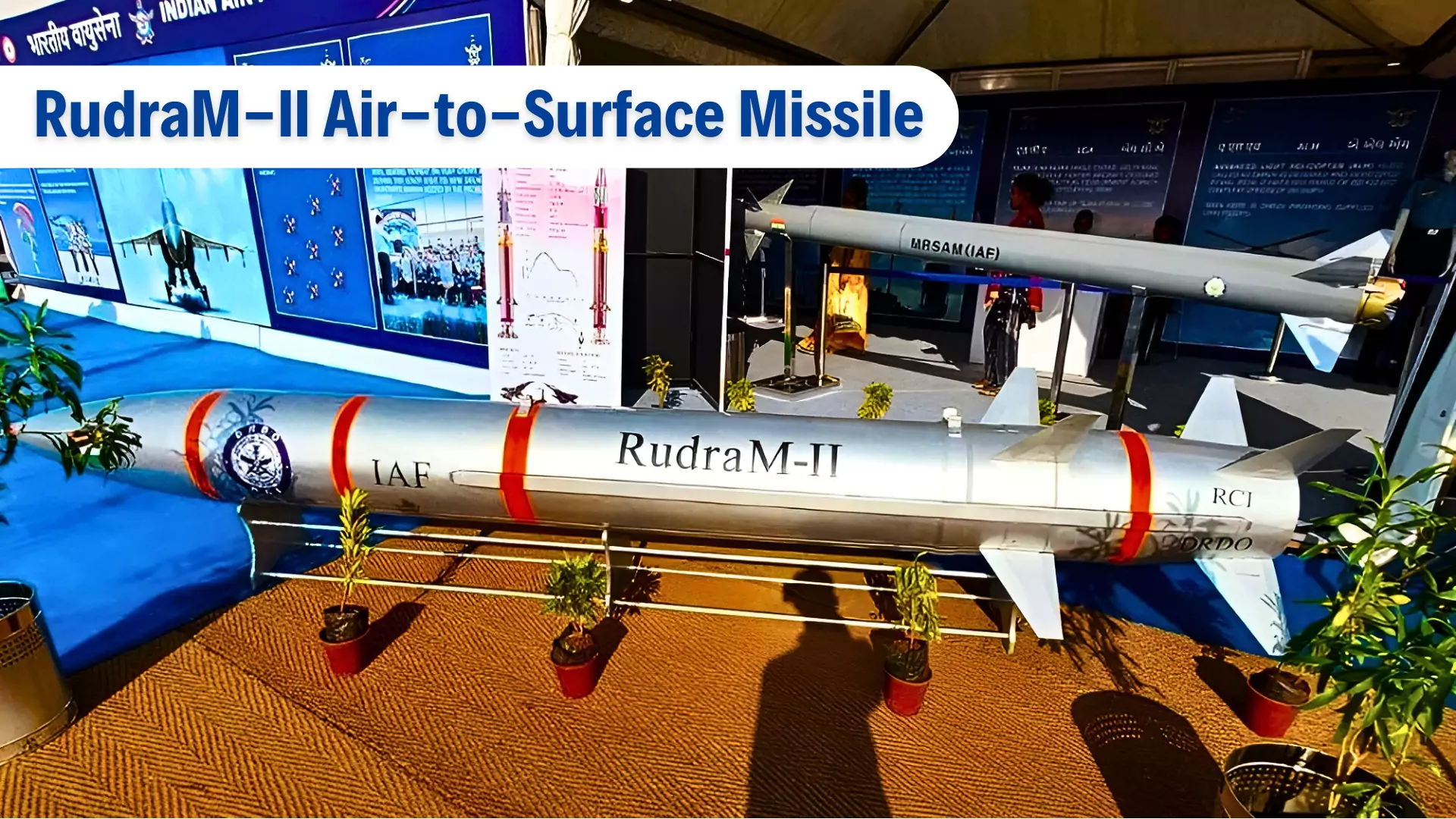Recently, the Defence Research & Development Organisation (DRDO) successfully flight-tested the RudraM-II air-to-surface missile from Su-30 MK-I platform of the Indian Air Force (IAF) off the Odisha coast.
DRDO Successfully Flight-Tests RudraM-II Air-to-Surface Missile from Su-30 MK-I Platform
- The flight-test met all the trial objectives, validating the propulsion system and control & guidance algorithm.
- The successful test has consolidated the role of the RudraM-II system as a force multiplier to the Armed Forces.
Enroll now for UPSC Online Course
About RudraM-II

- An Indigenous Missile System: RudraM-II is an indigenously-developed solid-propelled air-launched missile system.
- Task: It is meant for Air-to-Surface role to neutralize many types of enemy assets.
Rudram Missile – A Game Changer in Air-to-Surface Missiles
Rudram, India’s first anti-radiation missile (ARM), is an Air-to-Surface missile developed by DRDO.
- Comprises:
- Navigation System: The missile uses a navigation mechanism consisting of a satellite-based Global Positioning System (GPS) and an inertial navigation system.
- Passive Homing Head: It employs a “passive homing head” for guidance, enabling it to accurately strike targets even if the radiation source switches off during the engagement.
- Mandate: To detect, track, and neutralize the enemy’s radio frequency sources, including radar, communication assets, and other radio frequency sources.
- Future Developments and Advanced Versions:
- RudraM-1: It primarily aims at Suppression of Enemy Air Defenses (SEAD).
- RudraM-2 and RudraM-3: These are under development with ranges of 350 and 550 km, respectively.
- Significance: The development of these missiles began around eight years ago, with plans for future tests and inductions to enhance the IAF’s air superiority tactical capability.
![]() 30 May 2024
30 May 2024

